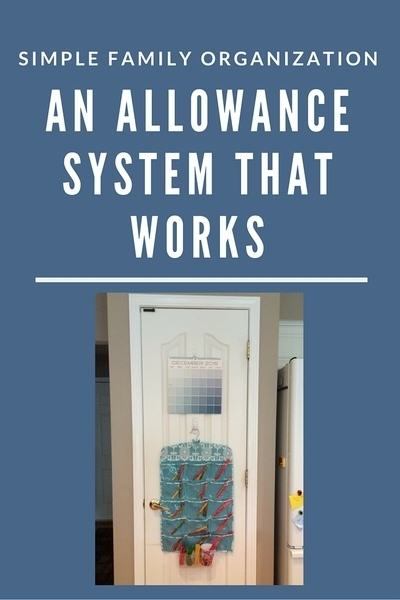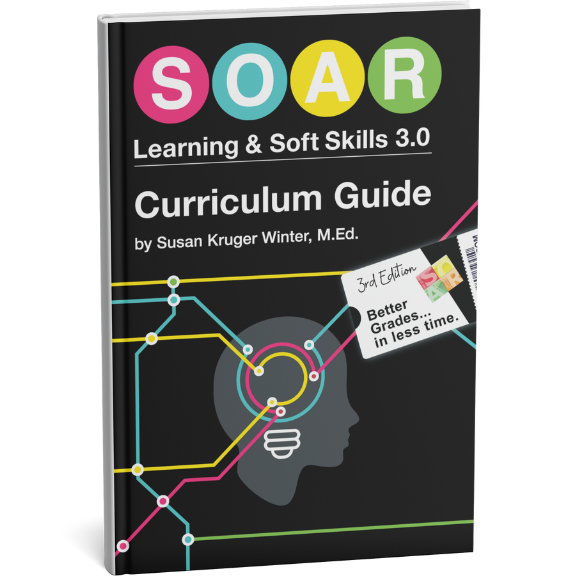Simple Family Organization:
An Allowance System that Works!
Our Allowance System
Solves the problem of… the kids not caring about: getting to school on time, turning off the lights, listening to directions, etc.
Additional benefits… the allowance system also builds: their sense of ownership and responsibility around the house, their value for money and other belongings, and their ability to discern how to allocate their funds.

Our Allowance System is tracked on a standard, monthly calendar and (ideally) paid once per week, on Payday.
How the Allowance System Works
In short, we pay our kids a flat rate for allowance each week, with the option to earn additional money for chores.
If a child is not cooperating with something –a “magnet” task, repeatedly forgetting to turn lights off, or some other (simple) infraction– they are charged money.
Their money is kept very accessible, in an envelope in the kitchen. If there is “cooperation” problem, WE don’t get upset. We don’t nag. We don’t even raise our voice. We simply say something like the statement I used just this morning, “I’m setting the timer for two minutes. If you don’t have your teeth brushed by the time it goes off, I’ll be charging you $1.00.”
The timer went off two minutes later; teeth had been brushed with no fuss, no delay, no arguing, no begging, and no nagging. PRAISE GOD!
Meanwhile, we expect them to pay for things they want: toys, video games, ice cream from the Ice Cream Man, snacks when they go to the movies with friends, etc. We do not buy any “extras” for them. They have to WANT to earn money for this allowance system to be effective.
We encourage proactive responsibility by offering “Double Pay” each week. To be eligible for Double Pay under our Allowance System, they must do two things/week to help around the house without being asked. This is key… if we have to ask, then they aren’t learning how to be proactive.
This is where the “chore magnets” come into play, from our Morning Magnet Board. As a way of providing some support for Double Pay, the chore magnets describe several tasks that frequently need to be done. When the children do a chore, they place a chore magnet in their section of the board until we record it on the Allowance System Calendar for Payday.
They can also earn additional money for additional chores we ask them to do. In this case, they need to negotiate their fee. (Our kids will be rockin’ negotiators!) We make notes on our Allowance System Calendar (pictured above) when bonus points are earned and/or additional chores are done. Every Payday (Sunday), we consult the calendar to see how much we owe them.
They must also save money. Every week, each child is required to add a small, flat-rate to their savings in the allowance system. They really don’t like dropping those coins and bills into their savings envelope. “Why can’t we spend this?” they ask. We want them to understand the concept of saving and “paying yourself first.” (This is also an introduction to the painful reality of paying taxes.) Every so often, we take them to deposit their savings in the bank.
Why Other Allowance Systems Have NOT Worked
We’ve made several attempts at allowance systems in the past. All of them were “reward-based.” In theory, I love the concept of having a reward-based allowance system.
But, frankly, “rewards” were not motivating. The children didn’t care if they missed a point. They would say, “Oh well, it’s just one point.” ..while I remained standing at the door, still the only person who cared that we would be late for school!
But now… if I walk over to their envelope and take money out of it, they feel the pain. And magically, they begin to CARE about getting to school on time.
Our Objectives
We devised this allowance system after we became crystal clear about our objectives; what did we really want to accomplish with an allowance system?
Together, my husband and I agreed we wanted to:
- Inspire our children to care for and appreciate what they have.
- Give them the freedom and experience of making their own decisions/choices.
- Hold them accountable for their behavior and responsibilities around the house, for their own growth and learning AND to give us support.
We also became clear about things we did NOT expect to teach from our allowance system:
- How to count and calculate money. Frankly, we found the process of calculating “10% for saving” and “10% for tithing,” followed by having the children count out three different amounts of money soooooo draining! To the point that none of us wanted to do “Payday.” The kids were frustrated and bored. We were exhausted! We finally agreed that this was not the appropriate time to teach about counting and calculating money. Instead, we teach these topics naturally as they make purchases and as they make plans to save for something special, when those lessons are much meaningful to the children. Also, when money-related topics are covered in school, our kids will automatically have an emotional connection to those lessons because they are learning how to value money through our allowance system.
- Tithing. We are very giving people. But, as noted above, the logistics of calculating weekly tithing became a total roadblock to previous allowance systems. Instead, we decided that “tithing” will happen on a case-by-case basis and will come from their spending money. When we learn about a family that has lost everything in a fire or a specific situation where their generosity will make a difference, we model and encourage (not force) them to give. After reflecting on this, we realized this is a more “tangible” way for them to learn the value of tithing. Otherwise, tithing could becoming a meaningless obligation.
FAQs
Q: How much do you pay each child in the allowance system?
A: Here’s our current pay scale…
|
Weekly Base Pay |
Mandatory Contribution to Savings from Base Pay |
Double Pay |
Double Pay: Mandatory Contribution to Savings |
|
|
11 yr-old |
$5.00 |
$1.00 |
$10.00 |
$2.00 |
|
6 yr-old |
$3.00 |
$0.50 |
$6.00 |
$1.00 |
Q: In this allowance system, it seems like they are paid simply for “existing;” are they earning money for doing any work?
A:Well… you could say they are paid based on the assumption that all “daily magnet tasks” are completed. But truth be told, we tried a lot of different ways to manage allowance and eventually landed on an important observation; on a day-to-day basis, our kids are a lot more motivated to avoid “losing” money than they are to “earn” money. (If they are actively saving for a specific item, they are motivated to EARN money, but that is not their baseline status.) We hope their motivation to earn money grows as they grow. But until then, we scaffolded our system to meet them “where they are at,” at this time.
Q: What if a “daily magnet” task has not been done?
A: Children are charged a fine for any incomplete task that creates a problem for us. Also, if we have to clean something up after them (beyond the few items we can put in the Life-Saving Multi-Purpose Organizer), they have to buy the item(s) back from us.
Q:How much do you charge for infractions under the allowance system?
A: This totally depends on the age of the child and the number of infractions. For the 6 yr-old, few things cost her more than $0.25, partially because of her age and partially because she’s been very cooperative with this process. (Which is interesting because she’s an extraordinarily hyperactive child, more active than her older brother ever was! But, she thrives with this structure.)
On the other hand, the 11 yr-old doesn’t mind losing a quarter. So, we charge him a minimum of $0.50. He was leaving the lights on all over the house, so I began charging him $0.50 per switch I flipped to the “off” position. One day, he racked up $2.50 in charges; it was painful enough that he learned to turn lights off. Otherwise, the only thing he gives us trouble with is brushing his teeth; he can drag that simple task into a 45-minute nag session! So, as explained in the example above, I finally started charging him $1 if he doesn’t brush his teeth before the timer goes off. Works like a charm!
We don’t have everything about this process worked out to a perfect science. Much of it is using our intuition about each child. As their parents, we know what motivates them. We know when we need to make a strong point. We know when to let things slide… most of the time.
If we make a mistake, we admit it to them… and they reward us with greater trust and compliance.
Q: How do they earn Double Pay in the allowance system?
A: Simply by doing TWO things to help around the house, without be asked by an adult. Taking initiative is a BIG deal! We reward that in a big way!
Q: Can they earn more money in the allowance system?
A:Yes, they have a few options. They can:
○ See the chore magnets.
○ Look for tasks added to the magnet board. (We add sticky notes to the magnet board as we discover additional jobs that need to be done.)
○ Simply be willing to help when Mom and Dad ask for help!
Q: Do parents have “veto power” over how they spend their allowance?
A: We let our children make their own decisions about how to spend their general allowance money; we want them to have the freedom to “make mistakes” and learn… while the stakes are small. We distinguish between “disappointing” vs “harmful;” we allow them to make purchases we think they may find disappointing, but we retain the right to veto any purchase we think may be harmful, for any reason.
Q: What is their “savings” for?
A: The savings account is for special circumstances. For our children, the primary distinction between “spending” and “savings” money is that they have 99% freedom to spend their “spending money.” But they cannot spend anything from savings without first discussing it with Mom and Dad. This caveat provides us with opportunities to talk through situations and coach them on how to make “bigger” decisions with their money.
Q: Do you really do this every week?
A: Yes and no. Yes, they earn money every week. No, we don’t hold Payday every Sunday. During one really rough spell, we went SEVENTEEN weeks without holding a payday! Meanwhile, we racked up dozens of notes on the calendar about extra money they earned, money they owed us after we purchased something at the store, etc. Eventually, we consolidated all notes into a spreadsheet and settled everything. (It turned out to be a good opportunity to teach them how a ledger works!)
My “80% Success Rule” (noted below) applies more to this process than anything else! There are times we forget to charge them for something we bought while at the store. I’m sure there are times we’ve forgotten to pay them for extra chores. (Although, they are responsible for leaving us invoices [sticky notes] on the counter. Before she could write well, our daughter was responsible for bringing us the sticky notes so we could write the invoice.)
Sometimes, I feel a twinge of guilt set in over something I didn’t execute well with our allowance system. But, that’s when I remind myself that I’m not Enron; my accounting does not have to be perfect at this level of the game. That’s also when I consider my objectives (listed above) and realize that –even with imperfect execution– we are very clearly meeting our objectives!
Q: What other benefits are you seeing from this allowance system?
A: At the time of this writing, we’ve been using this system for almost a full year. At the beginning, our daughter (age 4) begged us to take her to her favorite store (Claire’s) every. single. day! We settled on taking her every other week. At first, she found the visits disappointing because she couldn’t get everything she wanted! But, by month three, she developed a very strong ability to identify deals and discern what she wants, within her budget… a transformation that far exceeded our best expectations, especially for a four-year-old!
Our son was reaching an age where his “wish list” was filling up with big-ticket items. So, he’s been learning how to plan and save for what he wants. He now shops, online, for deals and is savvy about using his resources prudently.
Q: Any other tips?
A: Yes. We learned we have to keep Payday QUICK; we have a lot to accomplish in our Sunday Meeting and the kids get soooo antsy, it’s like trying to nail Jello to the wall! In that spirit, we don’t deal with coins smaller than $0.25. (Once again, we deal with counting money at other, less stressful times.)
We structure all payments around this NOTHING LESS THAN A QUARTER rule; if they owe us for something we bought at the store, we round to the nearest quarter.
If this bothers you, don’t follow this rule. For us, it is necessary to keep Payday moving quickly and it remains aligned with our objectives (listed above) for this process.
How to Set Up Your Allowance System
- Draw a chart like this and plug in your values:
Weekly Base Pay
Base Pay:
Mandatory Contribution to SavingsDouble Pay
Double Pay: Mandatory Contribution to Savings
Child #1
Child #2
- Determine your rules for:
- Double pay. Make a list of sample tasks that would be eligible for double pay.
- Extra tasks. Will you set a standard rate or will you encourage negotiating?
- “Fines.” (For us, fines are set on a case-by-case basis. But, we always give the children a warning and a chance to correct their behavior before we take their money.)
- Hang your calendar. (See “Supplies Needed,” below.) Be ready to make notes about extra jobs done.
- Label the money envelopes clearly, with each child’s name plus “spending” and “savings.”
- Find the storage spot. You will need an easily accessible place to keep the money envelopes.
- Hold a family meeting. Explain how the system will work, and why it’s good for them. Pay them for their first week. (Yes, even before they’ve done anything. The money gets them engaged… and gives you leverage to begin assessing fines, if needed.)
- Determine when you will hold Payday. We hold ours as part of our Sunday Meeting, held right after we return from church.
Supplies Needed
- Standard Wall Calendar
- 3-M hook
- 2 money envelopes per child. (One for savings. One for spending.)
- $50 cash, in $5 bills, $1 bills, and $5-worth of quarters. (We don’t need to replenish this very often; between money the kids owe us for things we buy at the store and what we owe them, we’ve developed our own micro-economy.)
Simple Family Organization: Three Rules for Success
This is just one post in my series “Simple Family Organization.” Find a full directory of additional posts, here. I’ve been creating systems for students and businesses for more than 20 years. In that time, I’ve found three “rules” that make systems successful for all ages:

This picture of my kitchen shows all of my Simple Family Organization systems in place.
Three Rules for Success
1. They must be easily accessible. Everything must be within easy reach for every member of the family. Also, whenever possible, supplies should be accessible with just ONE HAND. If you need two hands to move or manipulate something, the rate of compliance drops significantly.
2. They must require little maintenance. I have found lots of beautiful systems on Pinterest. But, I always ask, “What’s required if I need to change something down the road?” (Such as add a new meal, or a new ‘task’?) If making adjustments in the future will require more than a few steps, I’ll never get around to doing it. So, I keep it simple from the start.
3. They must be “80% Successful or better.” Not one of my “Simple Family Organization Systems” has been used accurately, 100% of the time. Sometimes I forget. Sometimes the kids forget. Sometimes our rhythm is thrown off for some unforeseen reason. But, overall, these systems have made a dramatic improvement in our lives at least 80% of the time.
Make it happen!
Susan Kruger, M.Ed.
Mom & Founder of StudySkills.com
SK 05172022
Six Steps
Conquer the Chaos
Get Our Free Guide & Information on...
 How to Organize & Motivate Students for Success
How to Organize & Motivate Students for Success
"*" indicates required fields
Get Our FREE Curriculum Guide!
The SOAR® Curriculum
The most critical learning, organizing, and communication skills needed for school. Learn more here.
Who’s Using SOAR®?
SOAR® Guarantee
Click here to learn more.





